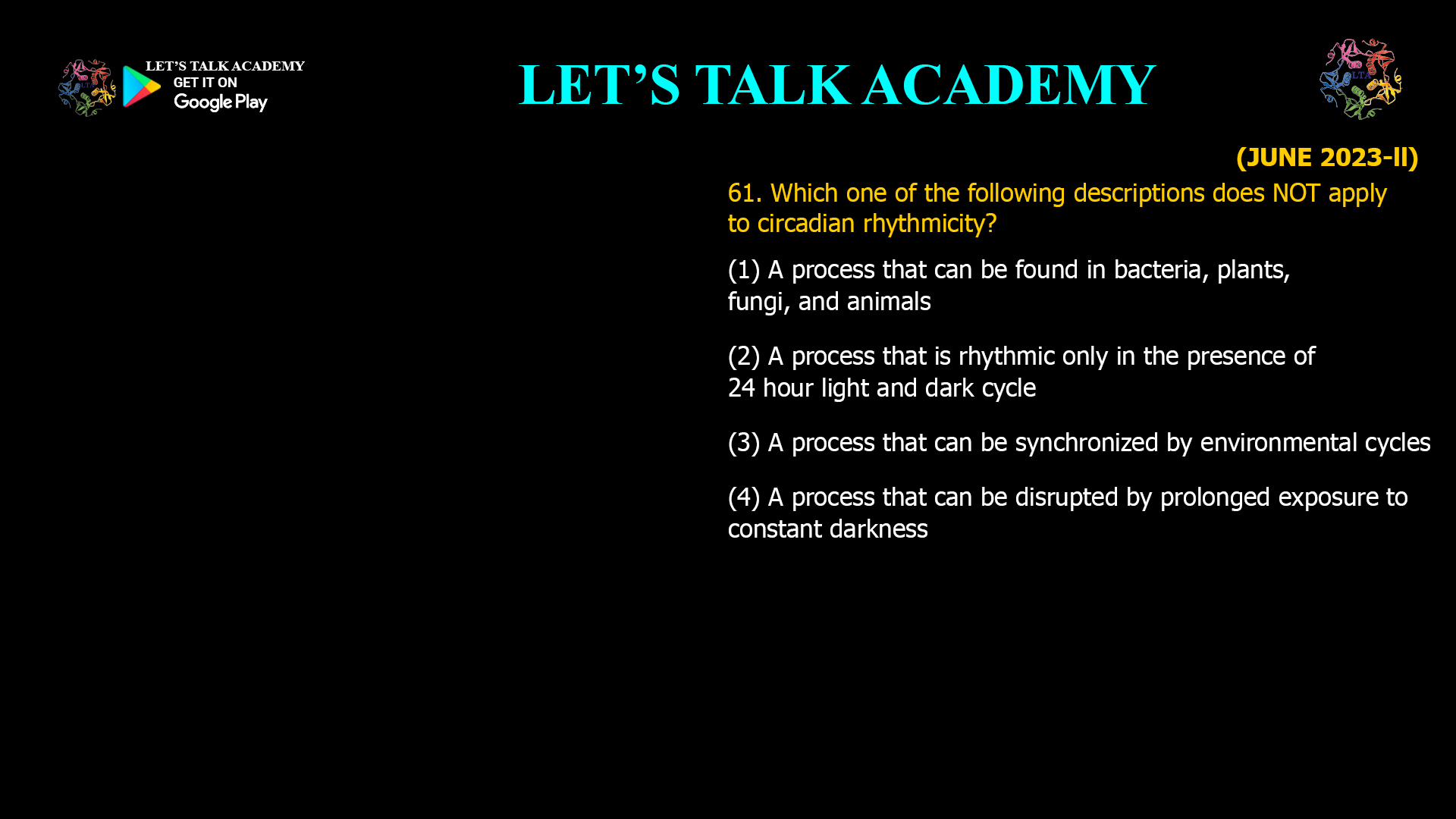- Which one of the following descriptions does NOT apply to circadian rhythmicity?
(1) A process that can be found in bacteria, plants, fungi, and animals
(2) A process that is rhythmic only in the presence of 24 hour light and dark cycle
(3) A process that can be synchronized by environmental cycles
(4) A process that can be disrupted by prolonged exposure to constant darknessKey Features of Circadian Rhythms
-
Endogenous Origin: Circadian rhythms are generated internally, not solely as a response to environmental changes. This means they persist even in the absence of external cues like light and dark cycles.
-
Universality: These rhythms are observed in a wide range of organisms, from simple bacteria to complex animals and plants.
-
Entrainment: While endogenous, circadian rhythms can be synchronized (entrained) by environmental signals such as light, temperature, or feeding times.
-
Temperature Compensation: Circadian rhythms maintain their periodicity across a range of physiological temperatures, ensuring accurate timekeeping regardless of environmental fluctuations.
-
Persistence in Constant Conditions: In constant darkness or continuous light, circadian rhythms continue, though their period may slightly deviate from exactly 24 hours—this is called “free-running”.
Evaluating the Statements
Let’s review which description does NOT apply to circadian rhythmicity:
-
A process that can be found in bacteria, plants, fungi, and animals
Correct: Circadian rhythms are indeed found across all these groups. -
A process that is rhythmic only in the presence of 24 hour light and dark cycle
Incorrect: True circadian rhythms persist even in the absence of external cues. They are not dependent on a 24-hour light/dark cycle, though such cycles can synchronize (entrain) them. -
A process that can be synchronized by environmental cycles
Correct: Circadian rhythms are entrainable by external cues such as light and temperature. -
A process that can be disrupted by prolonged exposure to constant darkness
Correct: While circadian rhythms persist in constant darkness, their synchronization can be lost, and the rhythm may drift or become less robust over time.
Conclusion
The statement that does NOT apply to circadian rhythmicity is:
(2) A process that is rhythmic only in the presence of 24 hour light and dark cycle
Circadian rhythms are fundamentally endogenous and persist even without external time cues, distinguishing them from simple responses to environmental changes.
-




1 Comment
Kajal
October 15, 2025Option 2